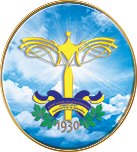Пожалуйста, используйте этот идентификатор, чтобы цитировать или ссылаться на этот ресурс:
https://er.knutd.edu.ua/handle/123456789/7658| Название: | Сучасні підходи до контролю елементних домішок у лікарських засобах рослинного походження |
| Другие названия: | Control of elemental impurities in herbal medicines |
| Авторы: | Баула, О. П. Деркач, Тетяна Михайлівна |
| Ключевые слова: | лікарська рослинна сировина лікарські засоби рослинного походження елементні домішки medicinal plant raw materials herbal medicines elemental impurities |
| Дата публикации: | сен-2017 |
| Библиографическое описание: | Баула О. П. Сучасні підходи до контролю елементних домішок у лікарських засобах рослинного походження / О. П. Баула, Т. М. Деркач // Фармацевтичний журнал. - 2017. - № 3/4. - С. 43-52. |
| Source: | Фармацевтичний журнал |
| Краткий осмотр (реферат): | Однією з найважливіших проблем виробництва лікарських засобів рослинного походження (ЛЗРП) є стандартизація сировини. Склад лікарської рослинної сировини (ЛРС) за своєю природою є змінним та залежить від дії багатьох факторів. Рослини можуть бути контаміновані мікроорганізмами, пестицидами, важкими металами тощо. Аналізуючи елементний склад ЛЗРП необхідно порівнювати винайдені концентрації токсичних елементів з їх гранично допустимими дозами, визначеними відповідно до фармакопейних вимог. Вміст інших домішок, типових для рослин, але не зазначених у Фармакопеях, важливо порівнювати з рекомендованими чи граничними дозами добового споживання людиною окремих хімічних елементів. Ці дані відрізняються при різних підходах до нормування. The standardisation of plant raw materials is among the most important problems of the production of herbal medicines. Medicinal plant raw materials are of complex nature and can be contaminated with impurity elements. Therefore, the content of elemental impurities typical for plants should be controlled in comparison with the existing conceptions of recommended or permitted daily exposures of human consumption of some chemical elements. The paper goal was to study the existing approaches in the world to the fixing of elemental impurity content in herbal medicines and comparative analysis of their permitted daily exposures. The following methods were used to implement the research goal: system approach, bibliographic and information search, statistical methods, as well as generalisation and analysis. The work is based on the analysis of documents of World Health Organisation and appropriate organisations of leading countries. The contents of 28 elements were shown to normalise in these documents. Depending on their toxicity and probability of ingress into drugs, the elements are divided into four classes. This approach creates a clear idea of the potential effects of elements on the human organism and also illustrates the sensitivity requirements for analytical methods to be used for elemental control. In medicinal plants as well as in plants that are used as food additives and spices, the content of the five most toxic elements is fixed. For other impurities, there are no universally recognised limit values. Therefore, when analysing the quality of herbal medicines, one should take into account the general limitations on permitted daily exposures of human consumption of individual chemical elements. |
| URI (Унифицированный идентификатор ресурса): | https://er.knutd.edu.ua/handle/123456789/7658 |
| Faculty: | Факультет хімічних та біофармацевтичних технологій |
| Department: | Кафедра промислової фармації |
| ISSN: | 0367-3057 |
| Располагается в коллекциях: | Наукові публікації (статті) Кафедра промислової фармації (ПФ) Кафедра професійної освіти в сфері технологій та дизайну (ПОСТД) |
Файлы этого ресурса:
| Файл | Описание | Размер | Формат | |
|---|---|---|---|---|
| Pharm_journal_2017_ukr.pdf | Основна стаття | 565,48 kB | Adobe PDF | Просмотреть/Открыть |
Все ресурсы в архиве электронных ресурсов защищены авторским правом, все права сохранены.
